
-
Find the right food for your petTake this quiz to see which food may be the best for your furry friend.Find the right food for your petTake this quiz to see which food may be the best for your furry friend.Health CategoryFeatured products
 Adult Perfect Weight & Joint Support Chicken & Brown Rice Recipe Dog Food
Adult Perfect Weight & Joint Support Chicken & Brown Rice Recipe Dog FoodThis weight management and mobility support dog food was created with Hill’s unique understanding of the biology of overweight dogs.
Shop Now Adult Perfect Digestion Chicken, Barley & Whole Oats Recipe Dog Food
Adult Perfect Digestion Chicken, Barley & Whole Oats Recipe Dog FoodScience Diet's breakthrough nutrition supports ultimate digestive well-being & healthy microbiome
Shop Now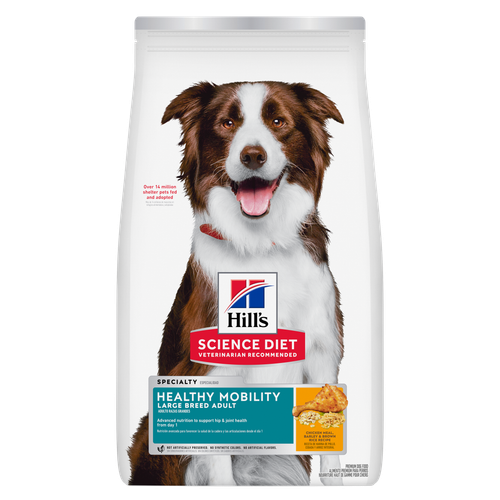 Hill's Science Diet Adult Healthy Mobility Large Breed Chicken Meal, Barley & Brown Rice Recipe Dog Food
Hill's Science Diet Adult Healthy Mobility Large Breed Chicken Meal, Barley & Brown Rice Recipe Dog FoodAdvanced nutrition shown to support joint health and improve mobility
Shop NowFeatured products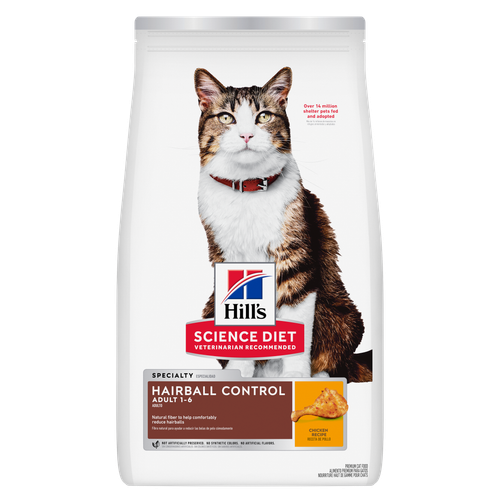 Adult Hairball Control Chicken Recipe Cat Food
Adult Hairball Control Chicken Recipe Cat FoodNatural fibre comfortably reduces hairballs
Shop Now Adult Healthy Cuisine Roasted Chicken & Rice Medley Cat Food
Adult Healthy Cuisine Roasted Chicken & Rice Medley Cat FoodDelicious roasted chicken and rice in a mouthwatering sauce
Shop Now Adult Perfect Digestion Chicken, Barley & Whole Oats Recipe Cat Food
Adult Perfect Digestion Chicken, Barley & Whole Oats Recipe Cat FoodHill's Science Diet's breakthrough nutrition supports ultimate digestive well-being & healthy microbiome
Shop Now -
DogCat
- Cat Tips & Articles
-
Health Category
- Weight
- Skin & Food Sensitivities
- Urinary
- Digestive
- Kidney
- Dental
- Serious Illness
-
Life Stage
- Kitten Nutrition
- Adult Nutrition
Featured articles Tips on How to Store Your Dog or Cat Food Properly
Tips on How to Store Your Dog or Cat Food ProperlyWhere you store your cat and dog food can make a big difference in the quality and freshness once it is opened. Here are some common questions and recommendations for optimal storage for all of Hill’s dry and canned cat and dog food.
Read More Water
WaterWater is the most important nutrient of all and essential for life. Animals can lose almost all their fat and half their protein and still survive, but if they lose 15% of their water, it will mean death.
Read More Fun Ideas for Kids and Pets This Summer
Fun Ideas for Kids and Pets This SummerOutdoor summer activities with your dog or cat can be fun for kids, too. Learn how they also teach kids responsibility & creates a bond with their pet.
Read More -


If you're wondering, "How long are dogs pregnant?" read on to learn about the different timeframes and length of pregnancy in dogs.
A normal dog gestation period (or pregnancy) is 63 to 65 days, regardless of the size or breed of the dog. For example, a Chihuahua is pregnant for the same amount of time as a Rottweiler. Though how long dogs are pregnant is shorter than humans, like humans, dogs also have three trimesters. Each one lasts about 21 days. If you think or know your dog has been bred, write down the date so that your veterinarian can have confidence in your dog's due date. Here's what you can expect when your dog is expecting.
The First Trimester
During the first trimester of your dog's gestation period, her appearance won't usually change, aside from gaining a small amount of weight.
A few dogs may develop signs of morning sickness during week three or four, but it's usually not as severe as in humans, and you may not notice anything at all. If your dog throws up once or twice, seems tired and has less of an appetite during this time, don't worry. Offer her a few small meals during the day to ease nausea. If you're worried about your dog, or if her nausea and lack of appetite continue for more than a few days, consult your veterinarian.
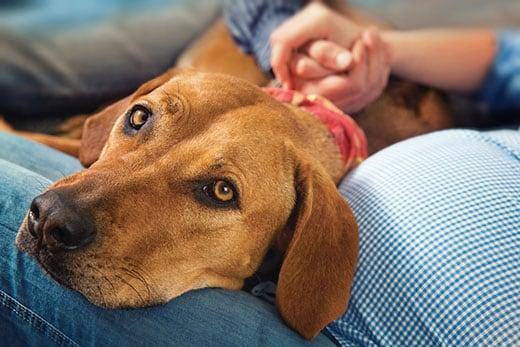
Even if your dog seems fine, you should make an appointment with your vet if you think your dog is pregnant. Schedule a prenatal checkup during the first trimester and let your veterinarian know the date that your dog was bred. This is a great chance to ask your vet questions, including what you should feed a pregnant dog. It's best to give your dog a complete and balanced food that's formulated for pregnant or nursing dogs. Your vet may also test for parasites or recommend other tests at this time, including checking hormone levels and/or administering an ultrasound of the fetuses. The ultrasound is a safe and non-invasive way to evaluate the puppies' health.
The Second Trimester
When do you start noticing changes in your pregnant dog's appearance? The second trimester may be when your dog actually starts to look pregnant and gain weight. Her nipples along the mammary chain (the glands along the left or right side of her body) will start to enlarge and may darken in preparation for all the milk they'll need to deliver to the puppies. Not much else happens during the second trimester: Your dog can continue her normal exercise and routine.


Tasty Tips
The Third Trimester
The beginning of the third trimester (around day 45) is when you can start to see the puppies on an X-ray (radiograph). Your vet will be able to see how many puppies your dog is carrying, and they'll also ensure that the puppies' heads will pass safely through the birth canal. This is mostly a concern with brachycephalic dog breeds, who may have birth canals that are too narrow to pass big puppy heads. If your vet determines that the puppies are too big to pass safely through the birth canal, then your dog will need to have a caesarean section, or C-section, to remove the puppies when she's done gestating.
Your dog's pregnant belly will also become larger during the third trimester, and it may sway gently back and forth beneath her as she walks. Her mammary chain will swell, and she may leak milk from her nipples. Your dog will likely have a bigger appetite than usual, one that then slows down as she gets closer to delivery. And you may feel and see the puppies moving during the last two weeks of pregnancy.
As your dog's time approaches, she'll likely start looking for and preparing her birthing nest. This can be as simple as a cardboard box or a dog bed with sides that are high enough to keep the puppies inside when mom needs to leave for a break. She may also drag blankets into her nest and arrange them just so. Let her do what she needs to do — just make sure the birthing and nesting area is in a temperature-controlled environment between 29.5 and 32 degrees Celsius for the first few days.
Make sure to have your vet on speed dial during the last few weeks of pregnancy, just in case anything goes wrong, or if you need help or advice. If your dog doesn't go into labour on the 65-day due date, or if she shows signs of dystocia (difficulty giving birth), then call your vet immediately.
Most of the time, mama dogs instinctively know how to be pregnant, deliver puppies, nurse them and care for them until weaning. Sometimes, however, dogs need our help, which is why knowing how long dogs are pregnant and what to expect can help ensure your dog's pregnancy is safe and joyous.


Dr. Sarah Wooten graduated from UC Davis School of Veterinary Medicine in 2002. A member of the American Society of Veterinary Journalists, Dr. Wooten divides her professional time between small animal practice in Greeley, Colorado, public speaking on associate issues, leadership, and client communication, and writing. She enjoys camping with her family, skiing, SCUBA, and participating in triathlons.
Related products

This weight management and mobility support dog food was created with Hill’s unique understanding of the biology of overweight dogs.

Science Diet's breakthrough nutrition supports ultimate digestive well-being & healthy microbiome

Advanced nutrition shown to support joint health and improve mobility

Hill's Science Diet Sensitive Stomach & Skin Large Breed dry dog food is gentle on stomachs while nourishing skin & promoting a lustrous coat. In a delicious large bite size for large breed dogs.
Related articles
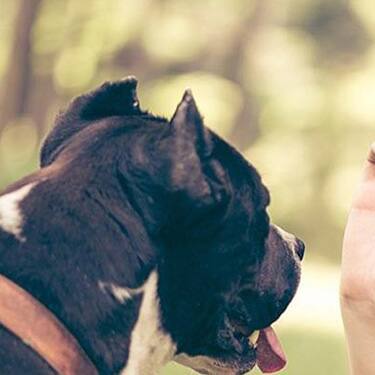
Learn what you can feed your pregnant or nursing dog to keep her and her new pups healthy.

Learn about choosing the right dog food to help ensure your mature older dog will receive the correct balance of nutrition.
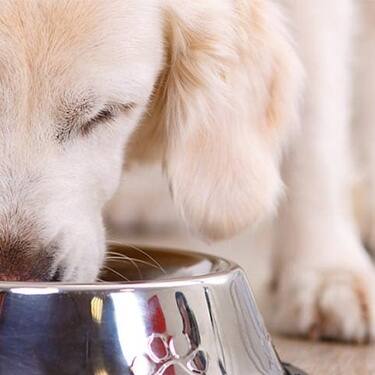
Learn how today's wet dog food blends have gotten a face lift, and how you'll provide your dog the nutrition he needs in the form he loves.

Large breeds of dogs have different nutritional needs than smaller breeds. Learn more about the specific needs of large and giant breeds.
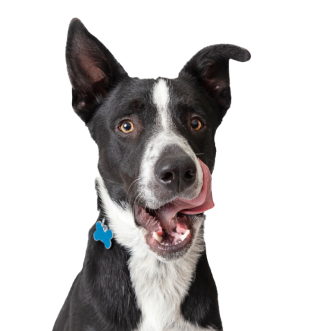
Put your dog on a diet without them knowing
Our low calorie formula helps you control your dog's weight. It's packed with high-quality protein for building lean muscles, and made with purposeful ingredients for a flavorful, nutritious meal. Clinically proven antioxidants, Vitamin C+E, help promote a healthy immune system.
Put your dog on a diet without them knowing
Our low calorie formula helps you control your dog's weight. It's packed with high-quality protein for building lean muscles, and made with purposeful ingredients for a flavorful, nutritious meal. Clinically proven antioxidants, Vitamin C+E, help promote a healthy immune system.

